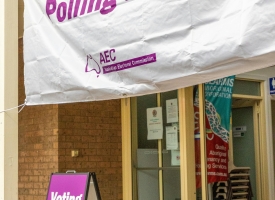Confronting the nicotine vaping pandemic
New nicotine vaping laws start to address the accessibility young people, including children, have to harmful vaping products.

New nicotine vaping laws start to address the accessibility young people, including children, have to harmful vaping products.
Australia has led the world in measures to reduce smoking and must not turn this victory into a catastrophic defeat, by creating a new generation of nicotine addicted vapers, and permitting the tidal wave of harm to children that has been seen overseas, the AMA said this week.
New vaping laws come into effect today which close a loophole in federal legislation which has enabled the unregulated importation and illegal sale of nicotine containing vaping products, or “e-cigarettes”, in each State and Territory.
AMA President Dr Omar Khorshid said under the new rules, nicotine containing vaping products will only be able to be accessed via a prescription from a doctor. He said the changes have a stated aim of protecting the non-smoking public, especially younger people and children, from the clear harms of nicotine poisoning and addiction.
“Vaping is not the risk-free version of smoking that some would have us believe. It is addictive, is associated with proven harms and we know that if nicotine gets into the hands of young children and is ingested, it is highly toxic and can be fatal in very small amounts,” Dr Khorshid said.
The new regulations aim to make nicotine containing vaping products less accessible and aim to prevent the terrible exponential increase in use that is being seen overseas, such as in the US, where around one quarter of all high school students have admitted to current or recent use of mainly high concentration products.
“The vaping lobby will inevitably moan about a terrible new imposition and make exaggerated claims that a smoking cessation tool is being lost,” Dr Khorshid said.
“The reality is that there is very little evidence that nicotine vaping products are effective in smoking cessation, whilst there is clear evidence that they act as a gateway for young non-smokers to become smokers, in addition to causing nicotine addiction and poisoning.
“Tellingly, Big Tobacco is increasingly a player in producing these products , and their marketing is targeting young people with packaging and flavours designed to hook children and adolescents,” Dr Khorshid said.
The Royal Australian College of General Practitioners is releasing best practice guidelines to support GPs if they are approached by smokers and nicotine vapers to prescribe these products for cessation. However, because of the limited evidence supporting their use in cessation, nicotine vaping products should be considered a last resort. The AMA’s view is that GPs, in working with their patients, should not feel pressured to prescribe them.
“There are more evidence-based methods for smoking cessation that currently exist, such as behavioural counselling, nicotine replacement therapy, and some prescription medicines.”
AMA Vice President Dr Chris Moy was invited on to Channel 9’s Today Show to talk about the changes on Thursday morning. He said the AMA wanted the laws to go further, he also told Sky News online vaping was a gateway to smoking for Australia’s young people. Members are invited to register for a webinar organised by RACGP and Quitline about the clinical guidelines for nicotine vaping products.
Webinar details:
5 October 2021, 6:30-7:30pm
Register here.
The webinar will describe the process for NVP smoking cessation; summarise key aspects of initiation of NVPs for smoking cessation and outline clinical considerations regarding the use of NVPs for smoking cessation. It will be a CPD activity under the RACGP program.



